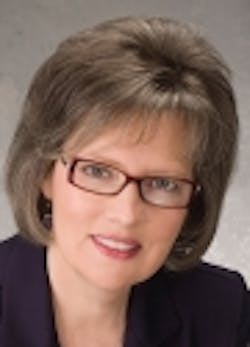Dentistry, DNA, and Detectives
It doesn't take much DNA. Even in a tooth with a root canal, there's more than enough DNA for testing. It needn't be fresh either. Scientists were able to extract DNA from the Dead Sea Scrolls. They were written on parchment, and parchment is made from animal skins. Take one animal skin, scrape the hair off, soak it in lime, stretch until very thin, and let it dry. Presto. Parchment. Well, maybe not so presto.
It was the Greeks who started using animal parchment on a big scale. They had to. Previously, they wrote everything on paper scrolls made from papyrus. They wrote so much that they ran out of papyrus. It only grew in the Nile delta and the demand was so great that it was over-harvested almost to extinction. Sound familiar?
By analyzing the DNA extracted from the scrolls, scientists were able to determine that the parchments were made from goat skins and radiocarbon dated most of them to the first century B.C.E.
DNA has been used to date even older objects. Recently, doctors from Massachusetts used a laparoscope to extract a tooth from a 4,000-year-old mummified skull. Using what little remained of the DNA from the desiccated pulp, they were able to identify both age and gender. An even more incredible bit of genetic detective work2 was tracking down the source of a summertime favorite – corn on the cob. There's no other plant like it that grows wild anywhere in the world. Scientists were able to track down the ancestry of corn to maize, a plant domesticated by early native Americans, but the trail went cold from there.
In the 1930s, a geneticist named George Beadle discovered that the chromosomes of maize were very similar to a Mexican grass called teosinte (tay-o-sin-tee). But teosinte looks more like a stunted rice stalk than corn, with only a dozen seeds inside a stony case. Most scientists thought that the differences were just too great to have evolved in just a few thousand years. Dr. Beadle persevered, crossing and re-crossing corn and maize plants, eventually growing 50,000 descendents that looked very much like both parents. Then along came DNA typing and Dr. John Doebley. His team collected 60 samples of teosinte from everywhere it grew and compared their DNA to every known variety of maize. They were all genetically similar, but the scientists were able to pinpoint one particular species of teosinte that was the closest genetic match. Its "ear" is only 4 cm long and it only grows in the Balsas river valley in southern Mexico, making that the cradle of modern corn. Some 9,000 years ago, neolithic farmers began domesticating this little grass into what would eventually become maize.
How do we know domestication began 9,000 years ago? It turns out that there's a lot more information that can be coaxed out of DNA than just its similarity to other DNA.
References
1 http://www.dentistryiq.com/index/display/article-display/285781/articles/rdh/volume-27/issue-2/feature/forensic-dentistry.html
2 Annu. Rev. Genet. 2004. 38:37-59 doi: 10.1146/annurev.genet.38.072902.092425. Copyright_c 2004 by Annual Reviews. All rights reserved. First published online as a Review in Advance on June 28, 2004, The Genetics of Maize Evolution.

